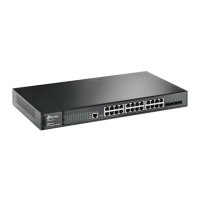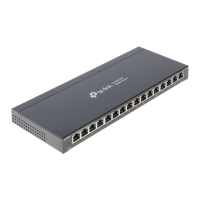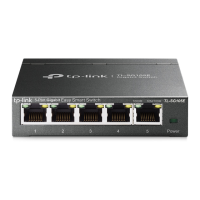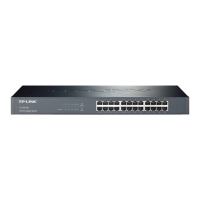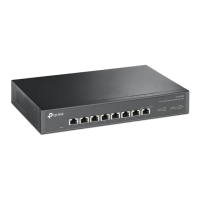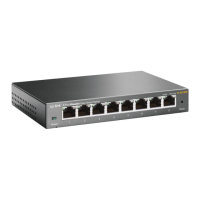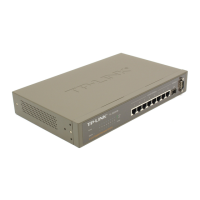User Guide 454
Configuring LLDP LLDP-MED Configurations
3
LLDP-MED Configurations
To configure LLDP-MED function, follow the steps:
1) Enable LLDP feature globally and configure the LLDP parametres for the ports.
2) Configuring LLDP-MED fast repeat count globally.
3) Enable and configure the LLDP-MED feature on the port.
Configuration Guidelines
LLDP-MED is used together with Auto VoIP to implement VoIP access. Besides the
configuration of LLDP-MED feature, you also need configure the Auto VoIP feature. Refer
to Configuring QoS for detailed instructions.
3.1 Using the GUI
3.1.1 Configuring LLDP Globally
Enable LLDP globally and configure the LLDP parametres for the ports. For the details of
LLDP configuration, refer to LLDP Configuration.
3.1.1 Configuring LLDP-MED Globally
Choose the menu L2 FEATURES > LLDP > LLDP-MED Config > Global Config to load the
following page.
Figure 3-1 LLDP-MED Parameters Config
Configure the Fast Start Count and view the current device class. Click Apply.
Fast Start
Repeat Count
Specify the number of successive LLDP-MED packets that the switch sends when it
receives the LLDP-MED packets from the neighbor endpoints. The default is 4.
If the switch receives LLDP-MED packets from the neighbor endpoints for the first
time, it will send the specified number of LLDP-MED packets carrying LLDP-MED
information. After that, the transmit interval will be restored to the specified value.
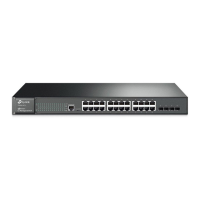
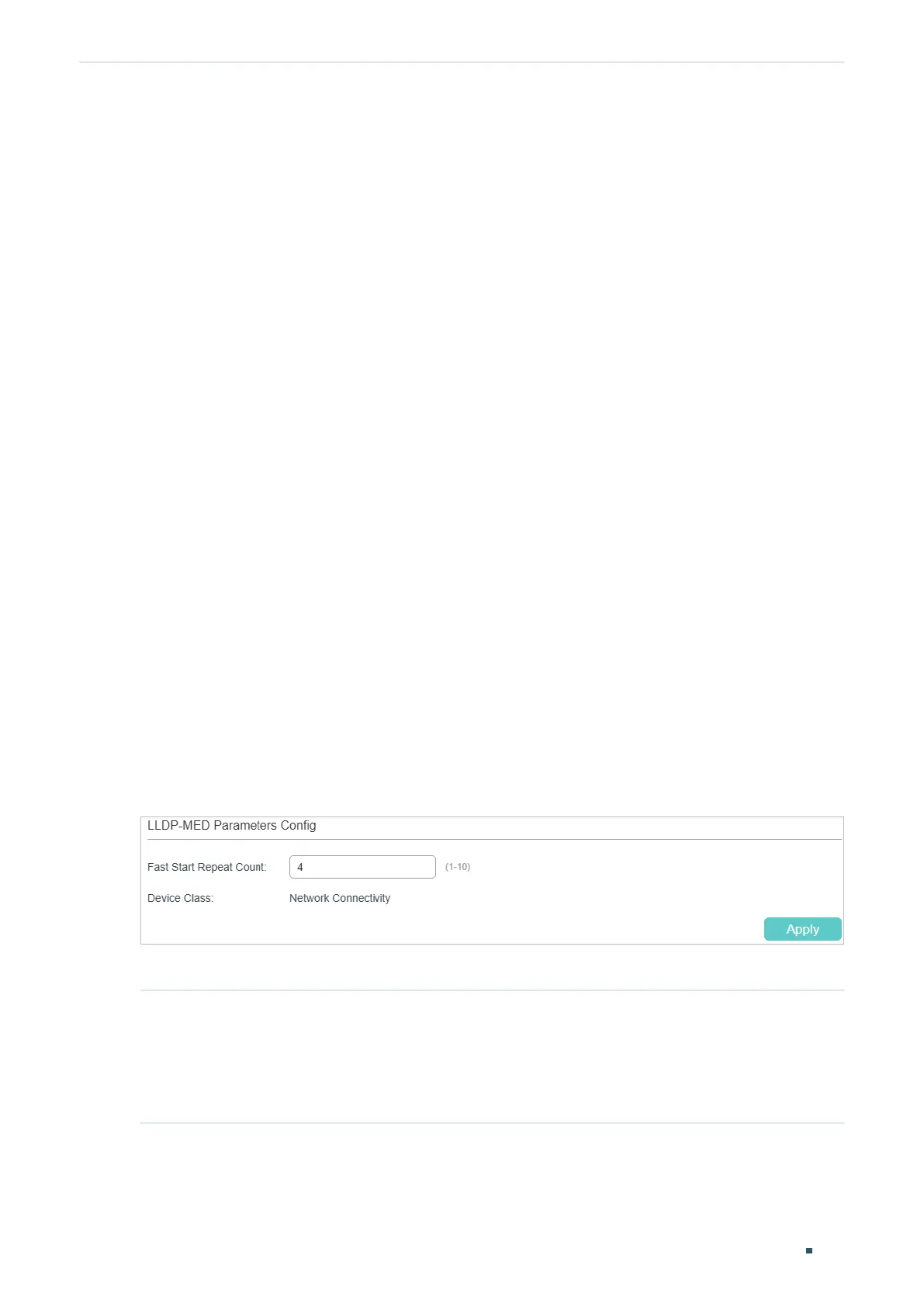